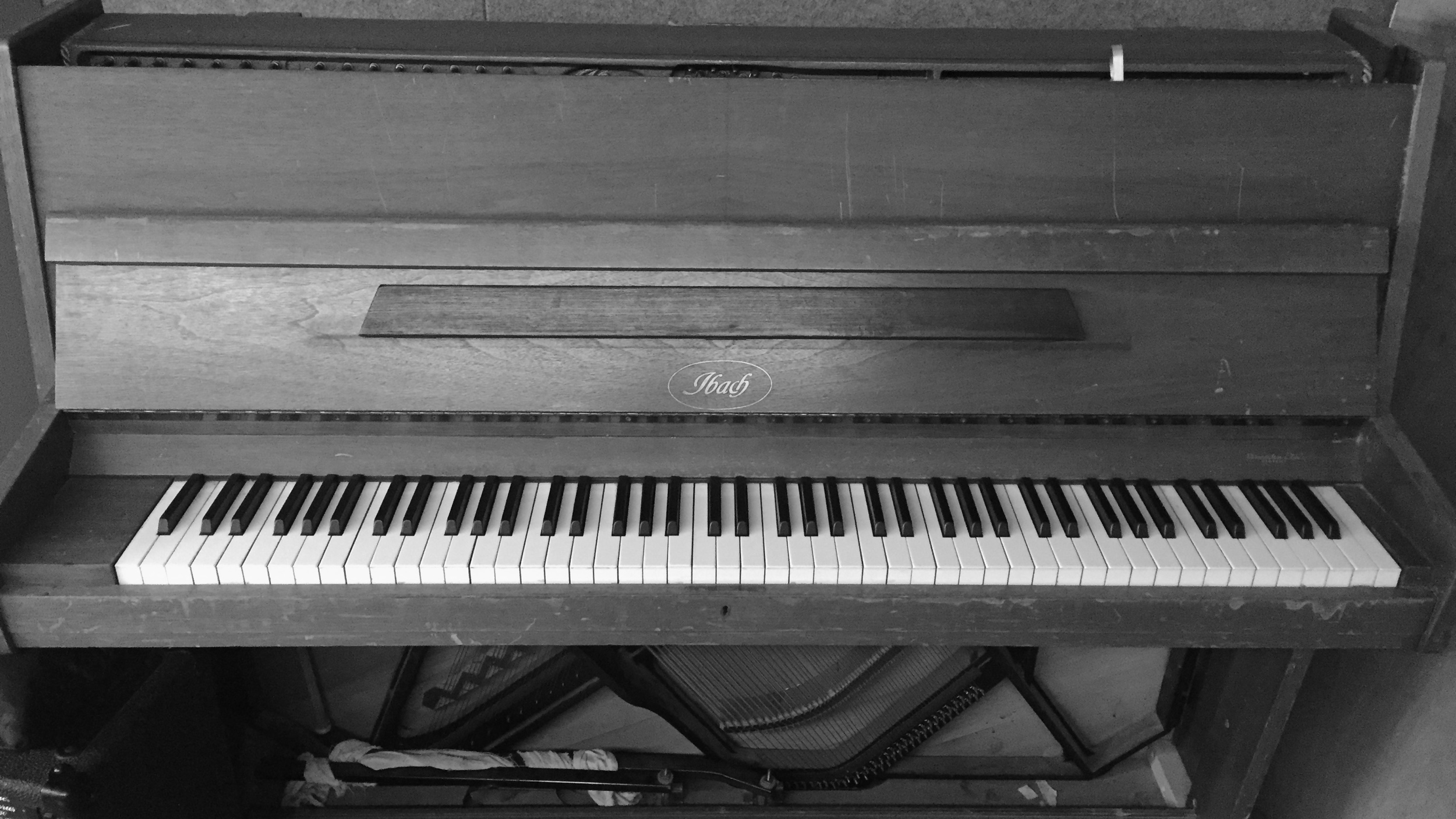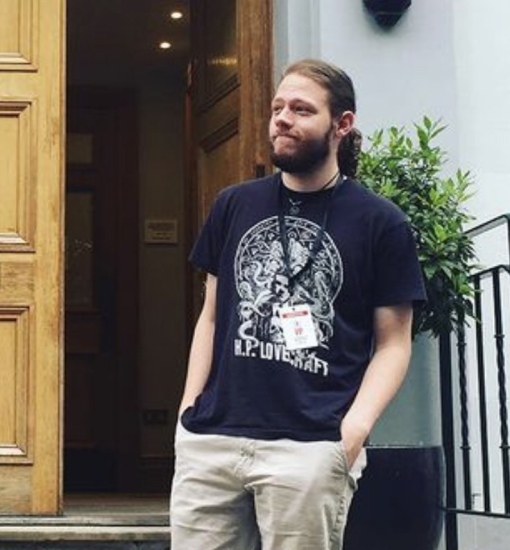Rickety Ibach
An old Ibach piano captured with figure eight mics


ByHidde Pieters
The story
Hey hey, it’s Hidde, this time with a piano library.
So I’m studying composition for the media at the HKU in Utrecht, and one of the hallmarks of its Music & Technology department is that first years, regardless of which specific course they’re taking, all have to take the same classes. This means I’m also having to take classes in creative coding, sound design, and various other topics. A few months ago, halfway through the second semester, we started a new class called Production Technology: Recording -it’s here where I discovered my love for working with microphones, actually. Basically, during the course of this class we had to record three instruments for a self written track using various predetermined recording techniques: one instrument had to be recorded mono, one stereo by using two mics, one in stereo with support, and then a fourth in any way we wanted. Due to a small misunderstanding in the definition of “stereo with support,” which was meant to be two mics for a stereo recording with a third offering mono or room mic support, and the sudden addition of an additional fourth instrument, my group was lacking one of the required stems to pass the class. I decided to take this task upon myself, and booked 90 minutes in one of the school studios to record in. This studio, which was mainly used to record foley for film, didn’t have any instruments save for an old Ibach piano that had definitely seen better days. That said, it still sounded good enough, so it did the job just fine. In the end, I finished recording the final stem much faster than anticipated, and was left with a full 40 minutes before I would have to start dismantling the recording setup. Deciding to make good use of the time I had left, I decided to go ahead and sample the piano; the it was already mic’ed, after all!
I decided to follow the example of Christian Henson, whom I had seen sample a piano in a video I had watched a few days prior (I think it was the claustrophobic piano), and sampled the piano in fifths, filing the empty spaces by tuning the notes down. As this was only my second time sampling an instrument, coming just off of finishing the LaPaz guitar, I took it somewhat easy with this one as well. I tried recording four velocity layers for the piano, with no round robins.
The recording setup on this one might be a bit strange, I’ll admit. I had been reading “Mixing With Your Mind,” by studio engineer legend Michael Paul Stavrou, in which I had read about the idea of using figure eight microphones to not only capture the sound of the instrument, but also the sound of the air that surrounded it, and so I decided to give it a try. I used two figure eight mics, one on either side of the piano. For one of the mics, the one near the lower strings of the piano, I turned the sensitive side of the mic (figure eight mics, despite being supposed to pick things up equally on both sides, almost always have a more sensitive side) towards the piano, and did the exact opposite for the mic towards the higher strings of the piano. I then scoured the room for a good place to put the omnidirectional mic I wanted to use as room support, and eventually found it sounded best in a high corner of the room.
This experience turned out to be quite enlightening on what I like in terms of recording, and how mic position can drastically change the sound of the recorded instrument. It also helped further cement my interest in sampling.
Admittedly, this isn’t the best piano library on the site, but I still quite like how it turned out despite its flaws. Hopefully you guys can find some use for it!
Cheers!
Hidde
Reviews
With a little improvement it would make a nice library!
I like the sound of piano, the only thing I found it difficult to play with is the dynamics of keys are slightly imbalanced. But it has a character and interesting to play with!
Looping makes it interesting
I don't know it is intentional, but if you engage the sustain pedal, the sounds will loop back to the beginning and the notes will all retrigger. It takes a long time for them to go back around, so it's not like a swarm, but if you're careful about what you add, the results can be really fun and inspiring. Not sure if this was supposed to happen or if it's an accident, but it's certainly an inspiring accident. Yes, there are some room noises in the samples. The samples are also mapped to the keyboard two octaves too high. The dynamic range isn't very even from key to key. I would never pick this piano to use for solo piano work, but I think it has real potential in creative applications with looping.
Needs an update...
It's definitely a piano full of character. The nice rustic and “grandma's piano” sound that comes out of this instrument is truly beautiful, and although not my favorite, I'm sure there are definitely people out here looking for this type of sound. I have two main concerns with the library, first, everything seems to be pitched at least an octave up on the keyboard which can make it difficult to reach the top notes. Secondly, it sounds as if the samples were not gain corrected based on their velocity, so you have to hit the keys very hard to get an audible sound. Other than those two things it's a nice library that people will definitely enjoy once fixed.
